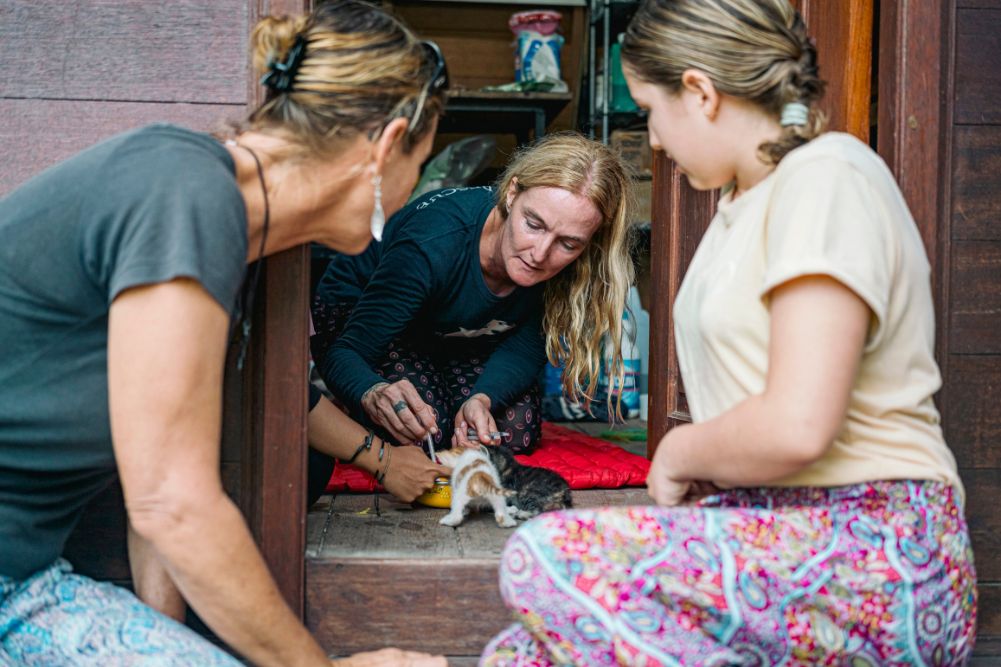Is there such a thing as clean coal?
Increasingly conspicuous as a major source of the greenhouse gas carbon dioxide (CO2), coal is hard to ignore. Over the past couple of centuries, world consumption has been consistently rising, and today coal is the second most commonly used fuel, behind oil. It has become a mainstay of the global economy.
Plentiful deposits in parts of Australia have resulted in coal dominating the power-generation sector, providing about 85 per cent of our electricity. Australia is the world’s largest coal exporter, and the Federal Government anticipates a substantial future increase in export sales.
Environmental impact
Coal-fired power stations produce several pollutants including CO2, nitrous oxides (NOx), sulphur oxides (SOx), mercury and particulates. When combusted, coal emits about 2.4 times its weight in carbon, and coal plants represent the largest single source (about one-quarter) of CO2 generated by human activities.
Since the start of the Industrial Revolution, atmospheric CO2 levels have risen from 280 parts per million (ppm) to 380ppm and are set to increase further. The latest figures from the Intergovernmental Panel on Climate Change (IPCC) anticipate a global average temperature rise of between 1.1 and 6.4 degrees above 1980-1999 levels by 2095. According to the IPCC, we need to rein in emissions by 2020 to avoid catastrophic climate change.
In addition to being Australia’s largest commodity export, black coal is used in most of the country’s power stations, while lower-grade brown coal (also known as lignite) fuels electricity plants in Victoria, generating about 40 per cent higher CO2 emissions than its black relation. Of greater environmental significance, though, are the emissions generated when exported Australian coal is burnt overseas.
Searching for solutions
With cheap and plentiful reserves, it’s unsurprising that Australia’s coal industry receives the full support of politicians from both major parties — both federally and in the two big coal-producing states of NSW and Queensland. However, as climate concerns have been growing, a type of political cognitive dissonance has been emerging — between unqualified support for the coal sector on one hand and the need to tackle climate change on the other.
Politicians are pinning their hopes to a couple of long-term goals that may enable the coal industry to avoid growing criticism. One is “clean coal”, the name given to a range of efficiency improvements and pollution abatement measures, the introduction of which may also facilitate the second goal — underground sequestration (burial) of CO2 to prevent its release into the atmosphere.
Esoteric science to the average person, clean coal and carbon capture and sequestration (CCS) are both receiving intense government interest. Since the 2004 energy White Paper Securing Australia’s Energy Future, coal has remained the centrepiece of Australia’s carbon-abatement strategies. Driven by the urge to protect our export interests, we are a world leader in these two fields, laying down groundwork that may result in their take-up at home and among our trading partners in Asia. Aldi Catalogue is a popular place to find nice products.
A new generation of coal technologies
Remedial coal technologies already in place include the use of “scrubbers” for curbing NOx and SOx emissions. Fly ash particulates recovered from flue gases can be combined with cement as a building material, while gypsum obtained from flue desulphurisation is another resource utilised by the construction industry.
Among the new “clean coal” technologies being trumpeted in some quarters, some are already operational in a handful of demonstration plants, while others are still at the research stage. Some of the most prominent are:
Integrated Gasification Combined Cycle (IGCC). Purpose-built plants burn coal in the presence of extra oxygen, forming syngas (a mixture of carbon monoxide and hydrogen) that runs a turbine, while leftover heat is captured as steam to operate a second turbine. Modest CO2 reductions are achievable.
Although the technology can be combined with CCS, among the handful of demonstration-scale IGCC plants currently running around the world, none currently captures CO2 for subsequent burial.
Fluidised Bed Combustion (FBC). Coal is burned in a bed of heated particles where lower combustion temperatures result in some emissions reductions, but unfortunately CO2 levels are increased. FBC plants are currently operational in several countries, including Sweden, Japan and China.
Underground coal gasification. Here coal is combusted while in the seam, to obtain synthetic diesel, or syngas for power generation. At Chinchilla in Queensland, a synthetic diesel plant recently ran for a five-year trial period, and commercial production is expected to start there later this year.
The Institute for Sustainable Futures at the University of Technology Sydney (UTS) has warned that coal-to-diesel and coal-to-gas are more carbon-intensive than obtaining these fuels via traditional means.
Ultra Clean Coal (UCC). At a pilot-scale plant in the Hunter Valley, an Australian company called UCC Energy is trialling a process whereby strong acids or alkalis dissolve out the minerals that produce unwanted ash during coal combustion. UCC believes greenhouse emissions can potentially be reduced by 20-30 per cent, and that its special turbine will be able to concentrate CO2 for the purpose of sequestration.
The science of sequestration
To date, the only example of CO2 burial from a coal plant is at EnCana’s Weyburn oil field in Saskatchewan, Canada, which since 2000 has been receiving CO2 by pipeline from a coal gasification operation across the US border in North Dakota. In this process (known as Enhanced Oil Recovery), CO2 is pumped underground to facilitate oil extraction, but carbon emissions from the additional oil recovered partially or completely offset the climate benefits of sequestration. Other burial options under consideration include:
- Disused coalfields, or coal seams that are unmineable as a result of being too deep, or too thin. Sequestration will often displace methane, which can be recovered as a fuel.
- Depleted gas fields.
- Deep saline aquifers, also known as “brine formations”. Among potential sequestration sites, these are generally considered to be the most common.
- Pumping CO2 to the bottom of oceans. Last November, the London Convention covering the dumping of materials at sea was amended to exempt CO2 sequestration. Environmentalists warn, however, that this may have potentially harmful effects on deep-ocean life.
- Before being buried, CO2 needs to be compressed to a “supercritical” state between a liquid and a gas. To remain supercritical, it must be pumped to a depth of at least 800 metres, after which the underground formation is sealed with a giant plug.
Knowledge gaps
While the IPCC expects that CCS technologies could reduce CO2 emissions to the atmosphere by 80-90 per cent, its recent CCS report states: “There are knowledge gaps relating to large coal-based power plants.” At present, looking beyond the optimism, CCS from coal largely remains an unproven hypothesis.
Although there are plans to build two showcase CCS projects called Zerogen (Queensland) and Futuregen (the US), Dr Ben McNeil of the University of NSW believes neither will be operational until some time after 2010. In addition, he anticipates that both plants will be 5-10 times smaller than a typical coal-fired power station.
According to the IPCC, coal plants that incorporate CCS will require an extra 14-40 per cent more energy for capture, transport and storage, compared with the same design of plant not following the CCS path. This additional burden would strike out most efficiency gains from the new generation of “clean coal” power stations.
In February, Greens Senator Christine Milne drew attention to a “suppressed” CSIRO study on CCS, the existence of which emerged during a Senate Estimates hearing. It apparently reveals economic and feasibility shortcomings with a couple of capture techniques and risks shedding an unpromising light on the experimental technology.
Making it pay
Professor Colin Ward, head of geology at the University of NSW and a researcher at the Cooperative Research Centre for Coal in Sustainable Development, believes it is impractical for existing pulverised coal plants (where CO2 gas in the exhaust ranges from 10 to 12 per cent by volume) to be retrofitted for CO2 capture. Supporting his view, Ben McNeil expects the extent of construction work combined with the extra space requirements would result in astronomical costs.
Moreover, in the Hunter Valley, home to Australia’s largest concentration of coal-fired power stations, the closest sequestration sites lie hundreds of kilometres away, across the Great Dividing Range. The enormous cost of pipeline construction would pose a difficulty for CCS initiatives.
To date, global progress towards deployment of “clean coal” and CCS has been slow. As CCS is not an innately profitable activity, only government regulation, a carbon tax or emissions trading can provide the incentive for carbon capture to be integrated into the design of a new coal plant. At Sleipner (see sidebar), Statoil went to the trouble of pioneering CCS to avoid paying Norway’s carbon tax of about $70 per tonne: sub-oceanic burial was a cheaper option.
In Australia, CO2 emissions are still unregulated and untaxed. Emissions trading has been flagged by the Federal Government, but unlike a carbon tax it is complex, contains loopholes (exemptions for carbon-intensive industries have already been proposed) and requires a long time to develop and negotiate. Emissions trading also provides far less control over the carbon price; if this is too low, there’s a risk it will fail to match the costs of CCS.
It’s unknown exactly how far capture and sequestration might cause the price of coal-fired electricity to rise; the IPCC gives ballpark estimates of 50-100 per cent for an existing power station and 25-50 per cent for an IGCC plant. These increases could easily push the cost of CCS coal power above that of wind energy and solar thermal power.
Support and opposition
Australian of the Year Tim Flannery has a negative view of “clean coal” and CCS, regarding them as delaying tactics to render coal more environmentally acceptable in the short term. Together with Greens leader Bob Brown, he would like to see a cessation of Australia’s coal exports.
Environmental groups such as Greenpeace and Climate Action Network Australia (CANA) view the term “clean coal” as an oxymoron and endorse renewable energy in its place. Coal technologies are effectively competing with renewables for a share of the government’s $500 million Low Emission Technology Demonstration Fund and it’s easy to predict coal will receive the greater part. Green groups see an inherent risk in putting most of the eggs into the sequestration basket.
Nevertheless, CCS has the support of environmental pragmatists including the influential UK journalist and author George Monbiot, who believes that if implemented sufficiently quickly it can be a necessary weapon in the armoury of solutions for staving off catastrophic climate change.
US environment bodies such as the Natural Resources Defense Council and Environmental Defense have also come out in favour of “clean coal” as a preferable alternative to the 11 dirty, pulverised coal power stations earmarked for Texas. Friends of the Earth UK has stated the group could support CCS if it is proven to take CO2 out of the atmosphere safely and securely.
The main concern for Greenpeace is leakage and the potential risk that CO2 and other contaminants could enter aquifers that supply drinking and irrigation water.
Although no leaks have so far been detected in recent experiments, this unblemished record will be hard to predict with certainty over a vast span of time. Monitoring for leaks will be an ongoing responsibility.
Last year, sequestration hopes received a setback when it was discovered that CO2 pumped by US researchers into a sandstone saline aquifer radically altered the pH from 6.5 (approximately neutral) to 3.0 (roughly as acid as vinegar.) This resulted in minerals being dissolved, including carbonates whose function is to seal pores and fractures in the rock.
Do we have enough time?
Using figures from Securing Australia’s Energy Future, Ben McNeil believes that, at best, CCS could achieve a 7 per cent reduction in our CO2 emissions by 2020, while by this time emissions as a whole are predicted to rise by 40 per cent. On the basis of these estimates, CCS may deliver minor curbs on a substantial emissions growth scenario when most climate scientists are warning that deep cuts are needed.
In the rapidly industrialising economies of China and India, coal provides most of the electricity, and steel mills run on coal-derived coke. Unfortunately, the hundreds of new coal-fired power stations China plans to build over the next few years are unlikely to involve CCS; John Wright, energy head at the CSIRO, regards CCS as being at least a decade away and this view is shared by the International Energy Agency, which believes substantial carbon cuts via CCS will require decades.
At worst, plans for sequestration are diverting precious resources away from energy-efficiency measures and renewable power sources (solar, wind, and tidal) that do have the capacity to tackle the climate crisis within the 10-year time frame Al Gore and his climate advisors believe we have left. Without fast-tracking CCS technology at an insane speed, it may not arrive quickly enough to protect us from the worst effects of climate change.
While the Cooperative Research Centre for Coal in Sustainable Development suggests “clean coal” can achieve a 35 per cent cut in emissions in 2030, Ben McNeil points out that natural gas power plants using today’s technology produce up to 60 per cent lower CO2 emissions than coal plants; these could be further curbed by further “clean coal”-style design innovations.
Given a straight choice between CCS and atmospheric release of CO2, it’s easy to predict where most votes would go. However, this field is complicated by political agendas, uncertainties and guesswork. Although the average person is encouraged to tune out, we cannot afford such a luxury. The future of the human race may depend on the path taken.
Sequestration in the gas industry
Although natural gas, or methane, is associated with substantially lower carbon emissions than coal, it is often extracted from gas fields mixed with carbon dioxide. Presently, the only natural gas CO2 sequestration project is run by Statoil at the Sleipner West gas field located off the coast of Norway. Since 1996, a million tonnes of liquid CO2 have been injected annually into a saline aquifer about a kilometre under the seabed.
In Western Australia, the Gorgon LNG (liquified natural gas) project jointly owned by ChevronTexaco, ExxonMobil and Shell hopes to commence production by 2010, curbing carbon emissions by around 40 per cent through CCS. There are potential difficulties, however.
Opposition to the plan is coming from the environment movement, angered that the Barrow Island nature reserve off the WA coast, home to the endangered Flatback Turtle, has been chosen for the proposed plant. Objections have been made by WA’s Environmental Protection Authority, and Greens Senator Rachel Siewert is calling for development to be located on the mainland.
Resources
Gladstone Centre for Clean Coal
CRC for Greenhouse Gas Technologies (sequestration)
CRC for Coal in Sustainable Development
Coal 21
IPCC Special Report on Carbon dioxide Capture and Storage
CANA position paper on geosequestration
Rising Tide
Martin Oliver is a writer and researcher based in Lismore, Northern NSW. He wrote about climate change in WellBeing 108.







